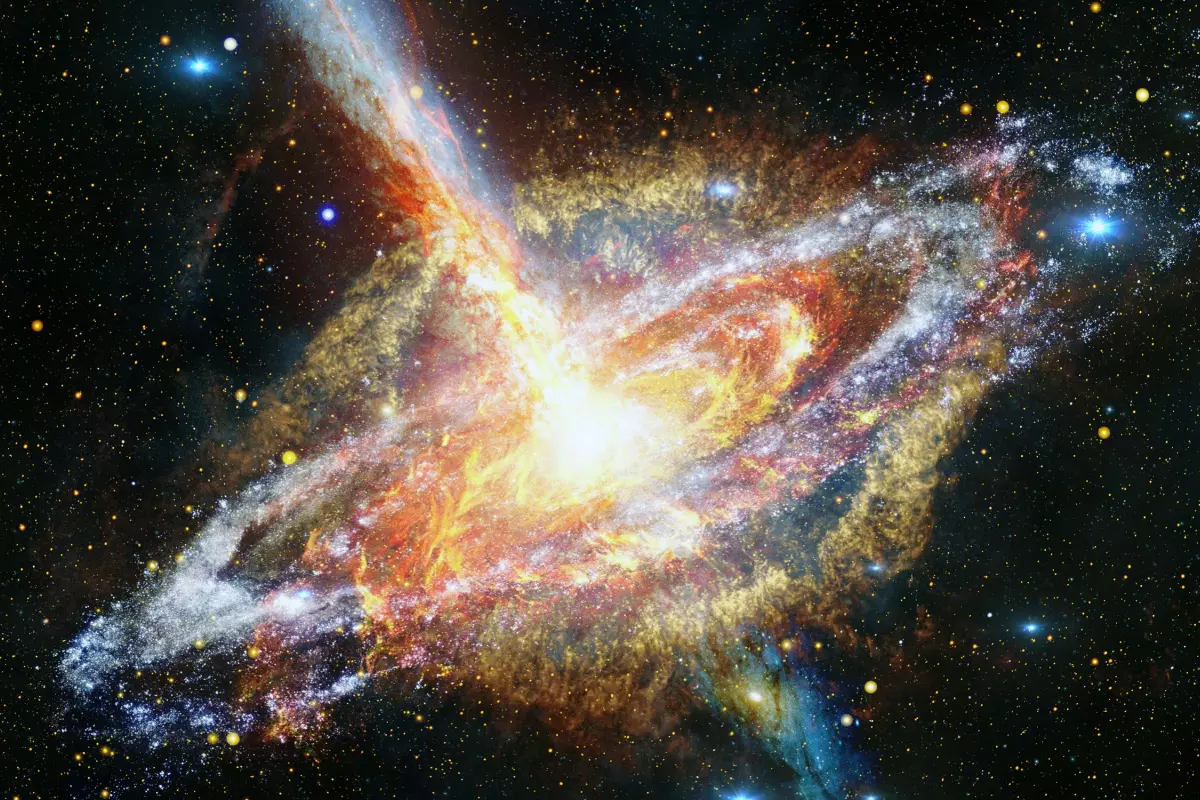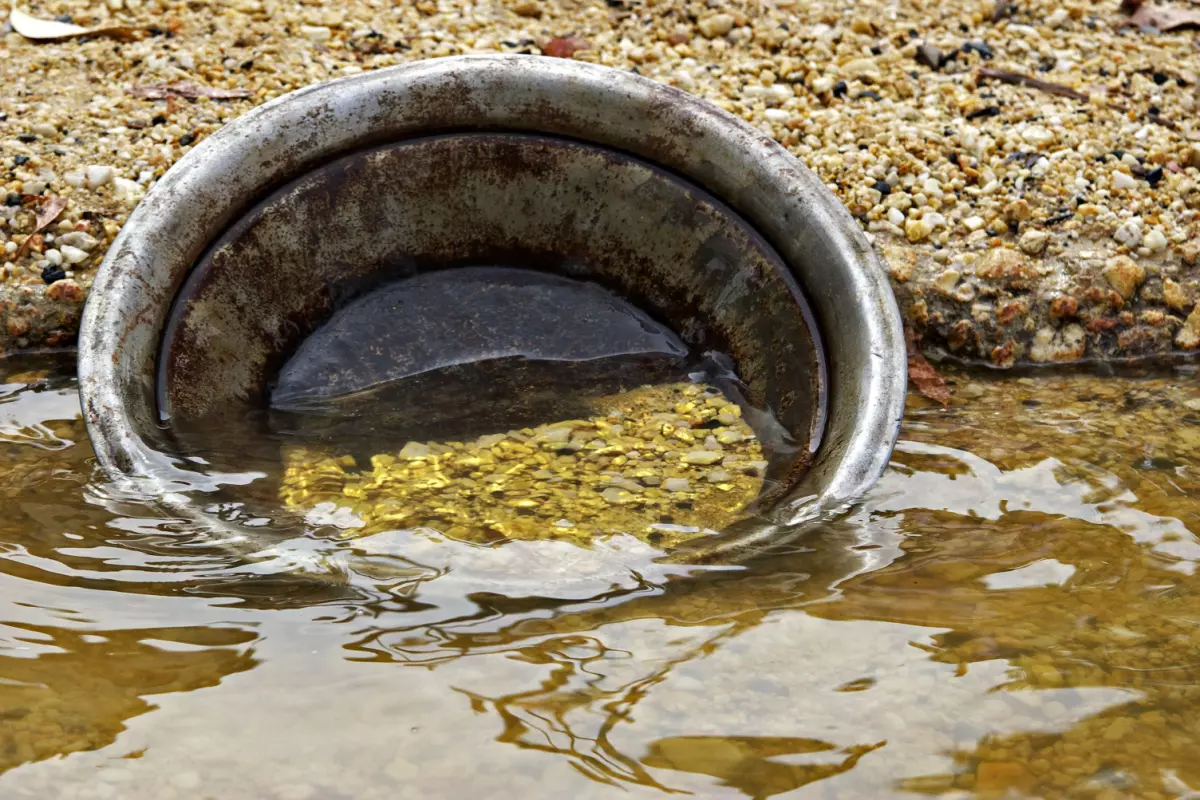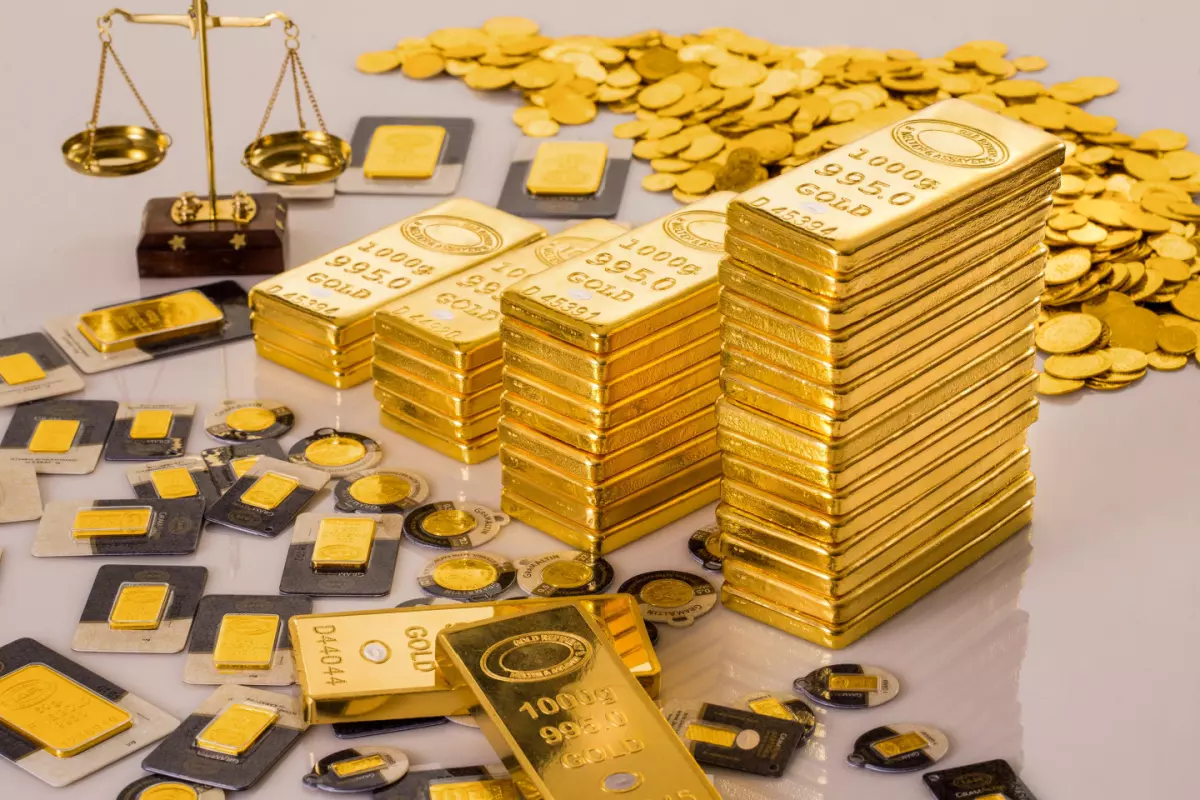Gold isn’t just dug up; it’s created from star explosions and shaped deep within the Earth.
Join us as we trace gold’s stellar origins and its journey through the ages, understanding how this precious metal moves from the silent void of space to the heart of our civilization right into the palm of your hand.
How Is Gold Formed Naturally?
Gold might seem common in jewelry shops and banks, but how is gold formed naturally and its true story starts in a place far, far away from Earth.
Gold Formation: An Astronomical Perspective
How is gold created? Gold’s journey begins with a bang, not here on Earth, but out among the stars. Imagine the universe as a colossal forge. In this immense space, two types of incredible events occur: supernovae and the collision of neutron stars.

Supernovae are massive explosions marking the end of a star’s life. Inside a dying star, conditions become extreme – with temperatures reaching up to 100 million Kelvin. This intense heat and pressure create the perfect environment for forming gold and other heavy elements. When the star explodes, it scatters these elements across space.
Neutron stars are the dense remains of exploded stars. When two neutron stars orbit each other closely, they eventually spiral inward due to gravitational wave emission and collide. This monumental event produces a staggering amount of energy and an environment ripe for the creation of heavy elements like gold.
After these dramatic events, gold is flung across the cosmos. Over billions of years, this gold has become part of new stars, planets, and even the gold deposits on Earth. Interestingly, scientists have discovered that much of the accessible gold on our planet arrived here via asteroids in the early years of Earth’s formation. When these asteroids collided with Earth, gold was deposited deep into the planet’s crust.
Geological Processes Bringing Gold to the Surface
While the origin of gold is cosmic, no new gold is created on Earth. Instead, the gold deposited deep within our planet billions of years ago is uncovered and redistributed through the Earth’s geological processes.

These are some of the natural processes that bring gold to the surface, allowing us to uncover the precious metal:
- Hydrothermal Processes: Picture the Earth as a giant kettle. Just like water in a kettle gets hot and moves around, the Earth heats water deep underground, creating hydrothermal fluids. These super-hot waters dissolve bits of gold from the rocks and carry them through cracks until the water cools down. When it cools, the gold is left behind, sticking to the rocks and forming gold deposits. This is how most of the gold we find deep in the Earth’s crust comes to be concentrated in veins or lodes.
- Placer Deposits: Now, think of gold as a heavy pebble in a stream. Over time, as mountains wear down and rivers carve through the land, these “pebbles” get carried away by water. Gold, being heavy, sinks and collects at certain spots where the water slows down, such as the inside bends of rivers or the bottom of lakes. This process, happening over millions of years, creates placer deposits. These are like nature’s own treasure troves, where gold accumulates and can be mined more easily, sometimes even just by panning in riverbeds.
- Subduction Zones: The Earth’s crust is like a giant jigsaw puzzle made of tectonic plates. When these plates collide, one can be pushed under another, a process called subduction. The descending plate heats up, releasing mineral-rich fluids as it goes deeper. Among these minerals is gold, which can rise and infiltrate rocks above, depositing gold as the fluids cool down. This process adds another layer to how gold is produced and redistributed within the Earth’s crust.
- Metamorphic Processes: Metamorphism is like the Earth’s way of recycling rocks. Under high heat and pressure, but without melting the rock completely, existing rocks are transformed into new types. This process can cause the gold within the rocks to recrystallize and form new deposits. For example, if a rock containing small amounts of gold is subjected to these conditions, the gold can be concentrated into larger deposits as the rock changes form. This not only redistributes the gold but can also make it easier to mine.
Where to Find Gold
Throughout history, 212,582 tonnes of gold have been mined, with around two-thirds of this amount having been mined since 1950. This staggering amount underscores the relentless human pursuit to uncover this precious metal.

But gold’s presence on Earth isn’t random; it’s found in specific places where geological processes have concentrated it into mineable deposits. Understanding where to find gold involves looking at the types of places where these geological processes occur.
Here’s a guide to gold’s natural vaults:
- Gold Belts: Across the globe, there are areas known as gold belts, which are regions where gold deposits are found in abundance. These belts have been identified through extensive geological surveys and historical mining activities. The most famous gold belts include areas in South Africa like the Witwatersrand Basin, the Carlin Trend in Nevada, and the Golden Triangle in Australia.
- Riverbeds and Alluvial Plains: As mentioned before, rivers play a significant role in transporting and concentrating gold. Over thousands to millions of years, rivers wash gold from its original lode deposits and deposit it downstream. These alluvial deposits can be found in riverbeds, floodplains, and at the bottom of lakes and seas where rivers empty. Historically, rivers have been a primary source for gold prospectors, with the California Gold Rush of the mid-19th century being a famous example of placer mining in riverbeds. Currently, gold is highly concentrated in the Klondike Region in Canada and the American River in California.
- Geological Formations: Certain types of rock formations are more likely to host gold deposits. For example, quartz veins, which are often found in metamorphic or igneous rocks, have been known to contain significant amounts of gold. Similarly, sedimentary rocks that have been heavily altered by hydrothermal activity are potential gold carriers. The Mother Lode region in California and the Ashanti Belt in Ghana are popular areas with gold-bearing rock deposits.
The Journey of Gold: From Mines to Markets
Once gold is purified, its journey enters a fascinating phase where it’s tailored for a variety of applications, each with its own specific requirements and processes.

Let’s take a closer look at how gold is transformed for different uses:
- Processing and Refining: The mined gold ore is first crushed and then ground into a fine powder. This process breaks down the ore and prepares it for further treatment. The powdered ore is then treated with chemicals like cyanide or mercury to dissolve the gold, separating it from the rock and other minerals. The dissolved gold is then purified through processes like smelting and electrorefining, ensuring the gold is free from impurities.
- Investing: For investment purposes, gold is typically molded into gold bars or coins. The process involves melting the purified gold and pouring it into molds to create standardized weights and shapes. Bars and coins must meet strict purity and weight standards, and they are often stamped with a mark of authenticity and their exact specifications. The price of gold coins and bars varies depending on their purity, size, and weight. When investing in gold coins and bars, make sure you receive a certificate of authenticity to make sure the gold is real.
- Jewelry: The creation of gold jewelry is an art that combines beauty with technical skill. Gold used in jewelry is usually an alloy, meaning it’s mixed with other metals like silver, copper, or zinc to improve its strength and durability. The ratio of gold to other metals determines the karat rating of the piece, with 24 karats being pure gold. Jewelers melt these metals together, then cool and shape them into various designs. The gold can be cast into specific shapes, drawn into wires for chains, or rolled into sheets for engraving or shaping into intricate designs.
- Electronics: In electronics, gold’s exceptional conductivity and resistance to corrosion make it invaluable. The gold used in electronics is often applied as thin layers over contacts and connectors. This is done through a process called electroplating, where gold is dissolved into a solution, and then an electrical current is used to deposit a thin layer of gold onto the metallic surfaces of electronic components. This thin gold coating ensures reliable, corrosion-resistant connections in everything from smartphones to space satellites.
- Dentistry: Gold’s use in dentistry relies on its non-reactivity and ease of molding. Dental gold is alloyed with other metals like platinum and palladium to achieve a material that’s strong enough to withstand biting forces but can still be precisely shaped to fit individual teeth. The alloy is melted and cast into the shape of crowns, bridges, or fillings in dental labs. These gold dental appliances combine durability with a high level of biocompatibility, ensuring they do not react adversely with body tissues.
FAQ on the Origin of Gold
If you have more specific questions about gold, please check our frequently asked questions section below:
What Is Gold Made Out Of?
Gold, a shiny, yellow metal, is an element, meaning it’s made of just one kind of atom. This element is created in the universe’s most dramatic events: explosions of stars called supernovae and when neutron stars crash into each other. These cosmic events produce gold atoms that get spread out across space. Over time, these atoms gather on planets, including Earth, where we find and use gold today. So, when you hold a piece of gold, you’re holding a piece of the stars!
What Is Gold Made Out of in Nature?
In nature, gold shows up as itself – just gold! This means it’s a pure element, not mixed with anything else to make it gold. But when you find gold in the ground or rivers, it’s usually hanging out with other minerals.
So, while the gold itself is pure, the rocks or sand around it can have bits of quartz, silver, or other elements. These don’t change the gold; they’re just part of its package. That’s why miners have to separate the gold from everything else when they find it.
How Long Does It Take for Gold to Form Naturally?
Gold forms incredibly quickly in cosmic terms, within seconds, when neutron stars collide, or a star explodes in a supernova. These events create gold and send it zooming across space. But it takes a much longer journey for this gold to end up where we can find it on Earth.
After landing on our planet, gold gets mixed into the Earth’s crust. Over billions of years, natural processes like volcanic eruptions and river movements gradually bring gold closer to the surface, making it reachable for us to mine. So, while gold is made in an instant out in space, getting it into our hands is a process that spans the ages.
How Did Gold Get on Earth?
Gold reached Earth through asteroids that struck the planet billions of years ago during its early stages of formation. These space rocks carried gold from distant parts of the universe, among other metals.
Upon impacting Earth, these asteroids deposited their gold into the planet’s crust, which has remained ever since. This process is how gold, initially formed in the cosmos, found its way into the Earth’s geology, becoming the precious metal we mine and treasure today.
Does the Earth Keep Producing Gold?
No, Earth doesn’t make new gold. The gold we find and use has been here since the planet was formed over four billion years ago. It got to Earth through asteroid impacts long ago. Since then, no new gold has been created.
Instead, what happens is that the gold already present gets moved around by natural processes like volcanic eruptions and river flows. These processes gather gold in certain places where we can find it today. So, when we mine gold, we’re collecting what’s been stored up in the Earth all this time.
How Old Is Gold?
The gold we find on Earth is about 4.6 billion years old. That means it’s been around since the solar system first formed. This happened not too long after the universe started, about 13.8 billion years ago.
So, the gold you see and use has been part of the Earth since it first came into existence, making it one of our oldest treasures.
Final Thoughts
As we invest in gold, understanding what makes gold valuable can deepen our appreciation for this asset; we’re not just securing a commodity but embracing a legacy that spans the stars to our very fingertips. In every glint of gold, there’s a story of endurance, a hint of the cosmos, and a nod to our continuous quest for progress.
James Miller is a Senior Content Writer at McGruff.com. He has a background in investing and has spent most of his career in the financial industry. He can trace his family tree back to the California Gold Rush when his ancestors risked it all to make it big in the west. He feels like he's following in their footsteps as he strives to make sense of today's gold market.
